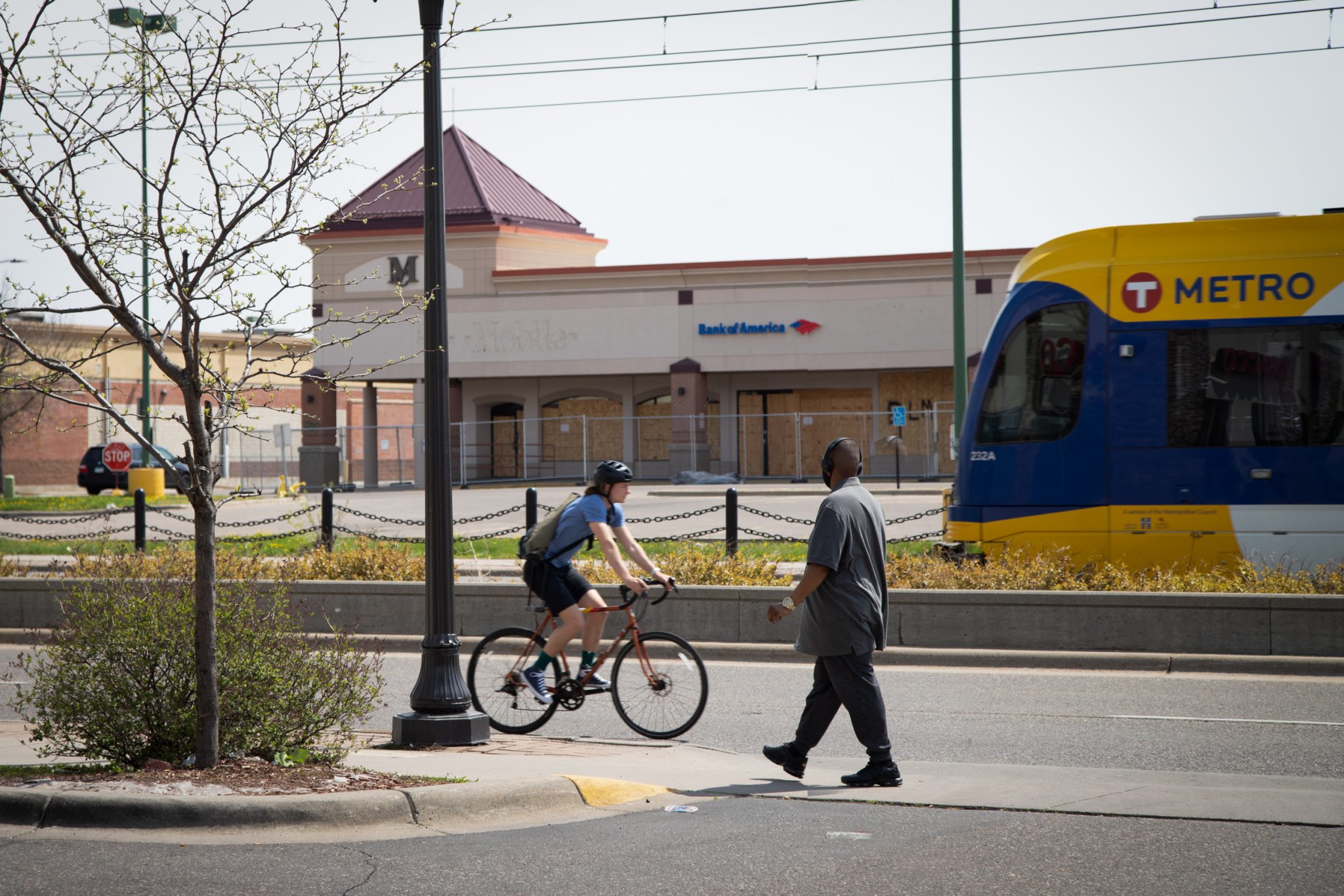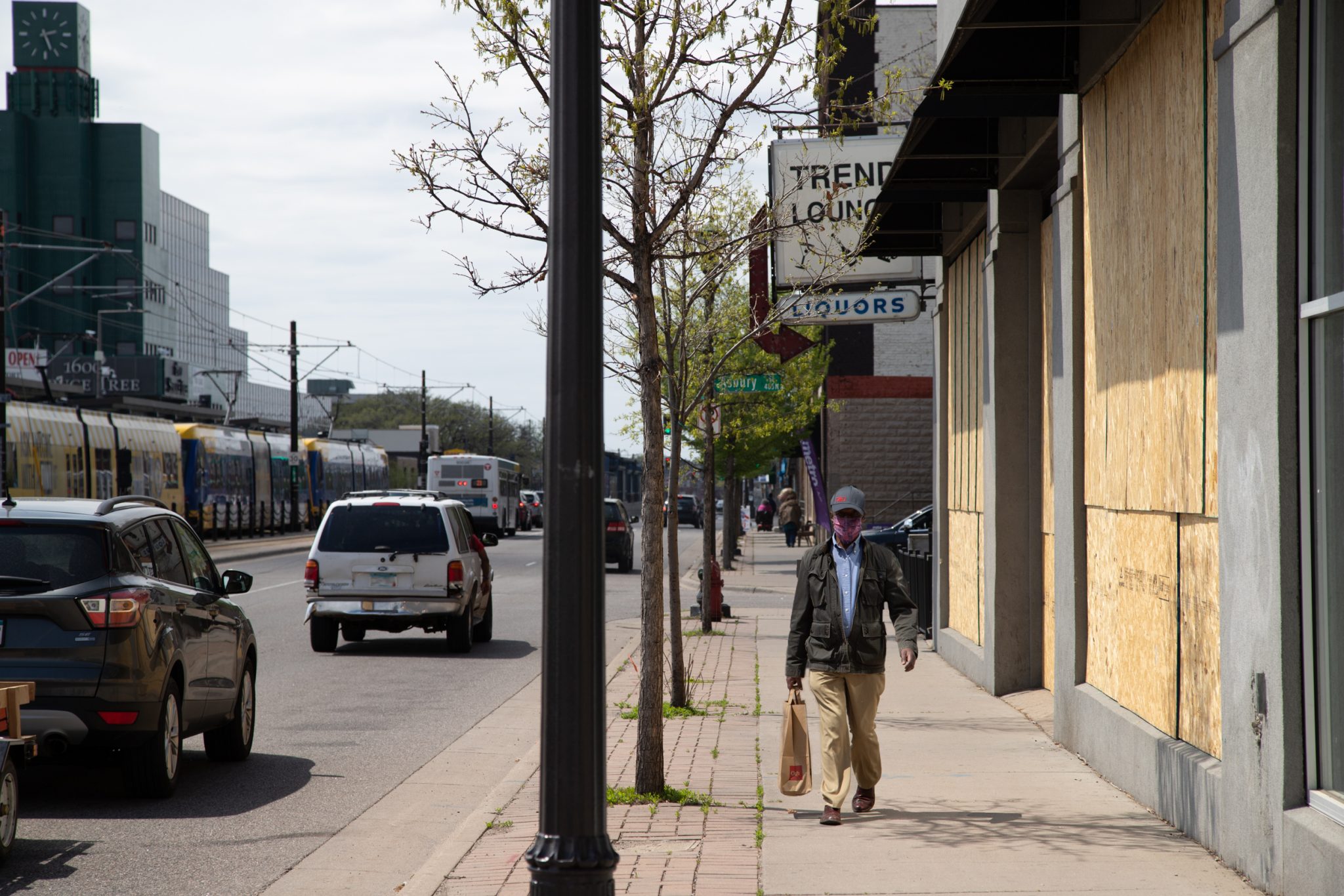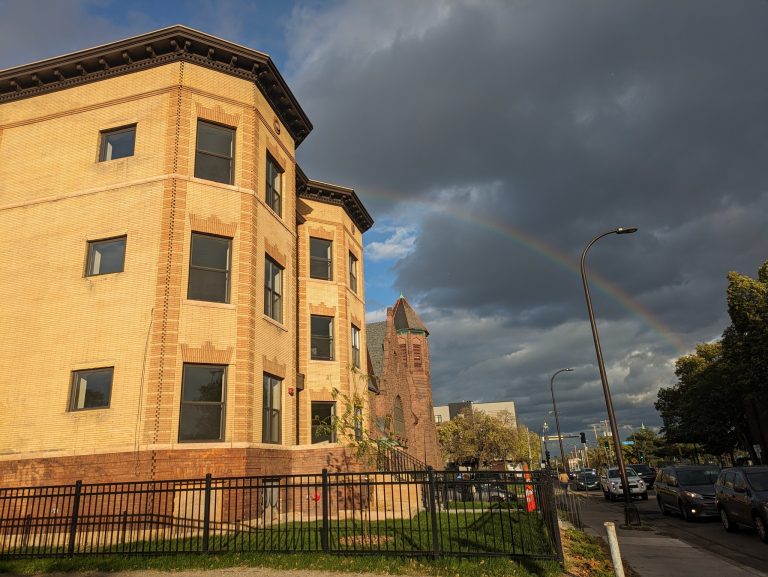Most of the shattered glass and fire-blackened bricks have been hauled away. Yet boarded storefronts and vacant lots still scar the streets of Minneapolis and St. Paul where violence erupted last summer in the days after the murder of George Floyd. Hundreds of buildings were burned and destroyed, displacing businesses and organizations already struggling because of the Covid-19 pandemic.
Now communities are ready to rebuild, and there’s tentative optimism they could end up with something better than what was there before. The McKnight Foundation is part of a broad effort to seize this moment—ensuring that redevelopment advances racial economic justice, and ultimately puts building ownership in the hands of local nonprofit organizations, tenant cooperatives, and individual Black developers and other people of color.
“An excitement and optimism is here in a way that it hasn’t been before,” said Felicia Perry, executive director of the West Broadway Business and Area Coalition.
McKnight is investing $5 million in a Community Asset Transition (CAT) fund managed by Twin Cities LISC, the regional office of the national community development organization Local Initiatives Support Corporation. The new loan fund will buy the gift of time. When real estate comes up for sale in low-income neighborhoods, outside speculators too often swoop in with ready cash to flip properties or build developments that don’t deliver what the community wants. In the process, they suck profits and rental income out of the neighborhood.
Community Partner Organizations


Communities and businesses affected by violence that erupted last summer are ready to rebuild—ensuring that redevelopment advances racial economic justice, and ultimately puts building ownership in the hands of local nonprofit organizations,
tenant cooperatives, and individual Black developers and other people of color. Photo Credit: Molly Miles
“The asset transition fund is able to move quickly, capture the property, and then allow for the best use to evolve from the community’s perspective,” said Eric Muschler, a program officer for McKnight’s Vibrant & Equitable Communities.
With access to CAT loans, public-interested real estate developers will be able to compete for buildings and land parcels as soon as they become available. The fund is working with several experienced community nonprofit developers, including the Twin Cities Land Bank, Neighborhood Development Center, and Seward Redesign. The organizations will either develop the properties or hold them during the several years it might take for community partners, including BIPOC developers, to pull together a plan and financing for the long term.
“At the heart of this transformational rebuild is ownership by Black and Indigenous people and people of color,” said Peter McLaughlin, executive director of LISC. “That is the goal, because that builds wealth and control.”
The CAT fund launched with $27.5 million from LISC, Hennepin County, JPMorgan Chase, Bush Foundation, Minneapolis Foundation, and McKnight. The first loans, which were scheduled for approval in April, will help purchase properties at Lake Street and Chicago Avenue and at Lake and Minnehaha Avenue, the epicenter of summer protests. Other priority areas are the intersection of Chicago and E. 38th Street, where George Floyd was killed; West Broadway in north Minneapolis; and several stretches along University Avenue in St. Paul, including the historically Black Rondo neighborhood and the restaurant and business districts anchoring African and Southeast Asian immigrant communities.
Partner community organizations envision buildings that offer lower-rent offices and storefronts for businesses displaced after the unrest or forced to close because of the pandemic. They want incubator spaces for BIPOC and immigrant entrepreneurs and opportunities for tenants to own the buildings. They want truly affordable housing and vibrant economic activity.
“This won’t happen overnight, but there’s a feeling now that it could happen,” said Taylor Smrikárova, a project manager with Seward Redesign who is tracking nearly two dozen properties, mostly around Lake and Minnehaha. She hopes CAT funding can be used to purchase several properties as they come on the market.
“One of the sellers we’re talking to is threatening to demolish the property if it’s not purchased at the price they want,” she said. “The CAT fund allows us to pay this price to prevent destruction of the community asset.”
“At the heart of this transformational rebuild is ownership by Black and Indigenous people and people of color. That is the goal, because that builds wealth and control.” —PETER McLAUGHLIN, LISC EXECUTIVE DIRECTOR
McKnight’s investment in the CAT fund, to be repaid by LISC in 10 years at 2% interest, is a different way to advance the Foundation’s mission beyond grantmaking. Prioritizing local and BIPOC ownership aligns well with the Foundation’s Vibrant & Equitable Communities program goal to “build a vibrant future for all Minnesotans with shared power, prosperity, and participation.” Community leaders like Perry see new possibilities now that weren’t available previously.
“Ownership of property and land, it’s something we have not had access to for various reasons,” she said. “Now our Black developers are getting access to financial tools that will allow whole families and generations to start closing the wealth gap.”
LISC envisions growing the CAT fund with investments from traditional banks and other sources and creating a pipeline of projects to build even more wealth in these historically underinvested communities.
“This is as much mobilization of the private sector to address the agenda of racial equity that I’ve seen in more than a generation,” said McLaughlin. “This is a moment born of pain in the wake of George Floyd’s murder. And as a community, we must not squander it.”



